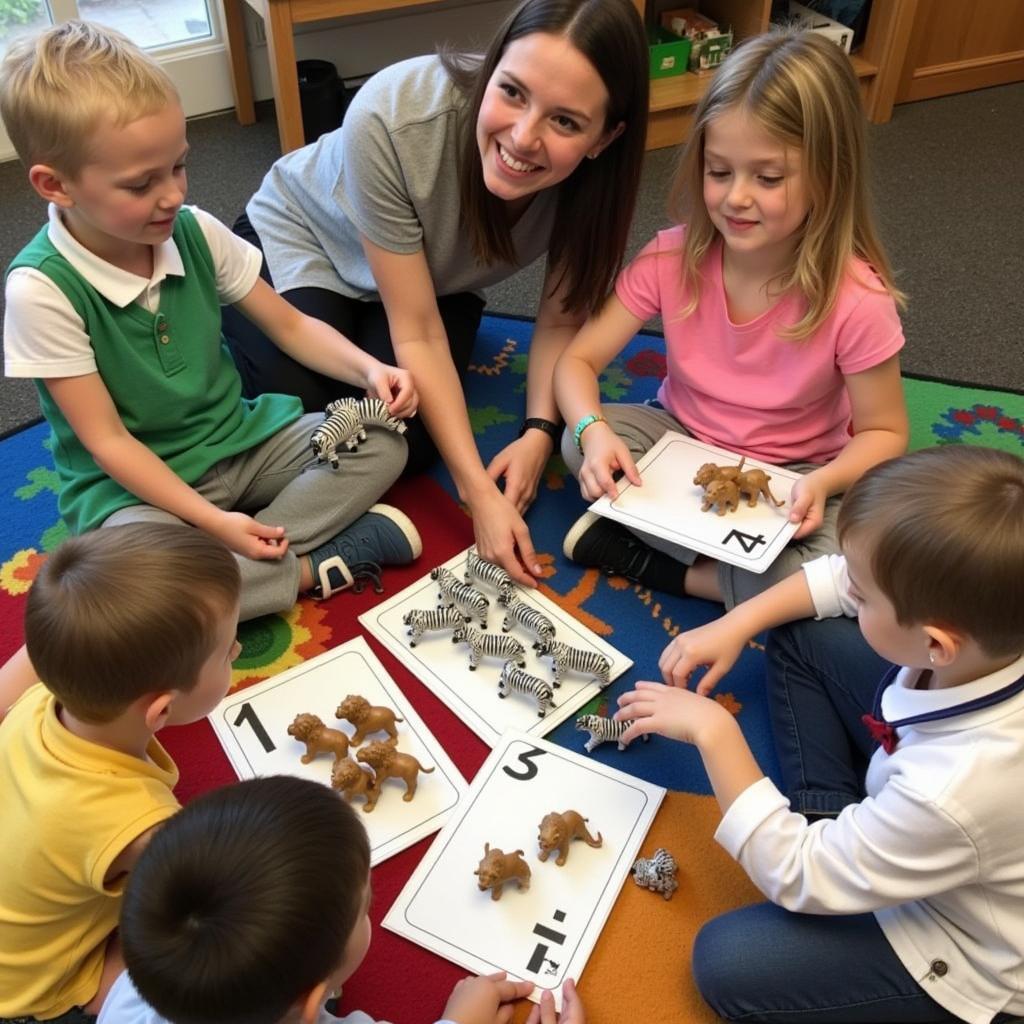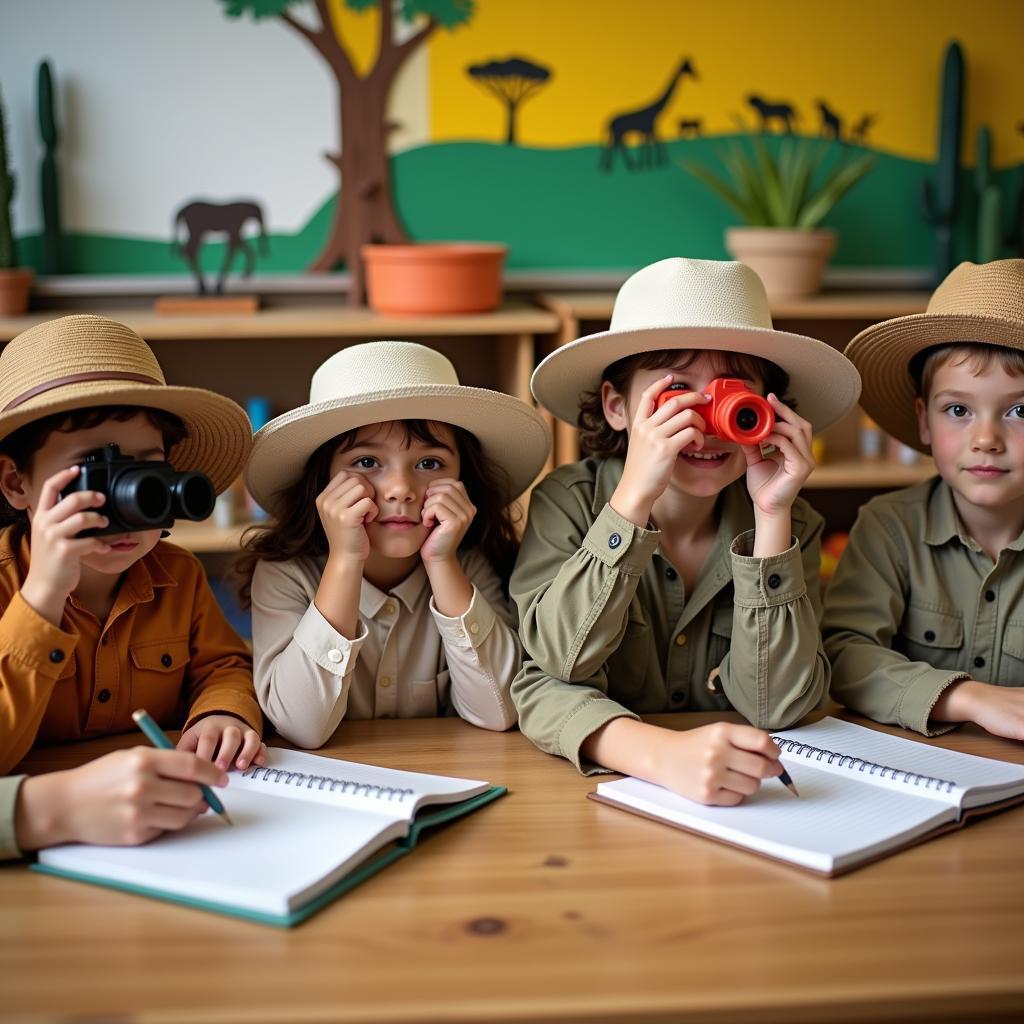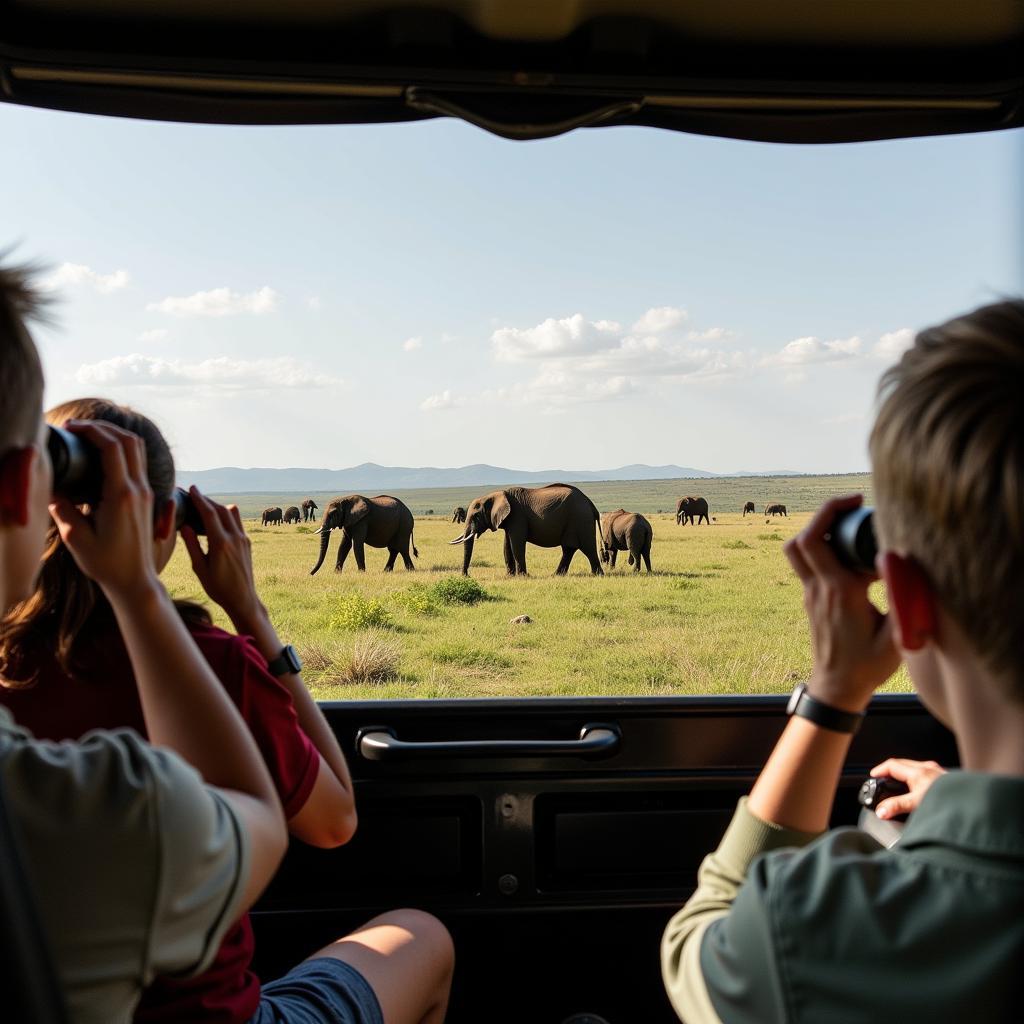Engaging African Animals EYFS Activities
Learning about African animals is a fantastic way to introduce young children to the wonders of the wild. African Animals Eyfs Activities offer a wealth of opportunities for children to develop their understanding of the world, enhance their creativity, and build essential skills. These activities can be easily adapted to suit different learning styles and age groups within the Early Years Foundation Stage (EYFS).
Exploring the Savannah with Playful Activities
African animal-themed activities can be incorporated into various areas of the EYFS curriculum. For example, children can create their own savannah landscapes using playdough, cardboard boxes, and natural materials like leaves and twigs. They can then populate their creations with toy animals, discussing the different habitats and behaviours of each creature. This hands-on approach fosters creativity, problem-solving, and language development.
Creating animal masks is another engaging activity. Children can decorate pre-cut masks or create their own from scratch, using paint, feathers, and other craft supplies. This allows them to explore different animal features and express their artistic talents. They can then act out the animals they have chosen, further developing their understanding of animal movement and communication.
Sensory bins offer a wonderful way to explore textures and develop fine motor skills. Fill a bin with sand, dried beans, or pasta, and hide small plastic African animals inside. Children can then dig and search for the hidden creatures, discussing what they find and developing their vocabulary related to animals and their environments.
Incorporating Literacy and Numeracy
African animals EYFS activities can also be used to enhance literacy and numeracy skills. Children can create stories about their favourite African animals, drawing pictures to illustrate their narratives. This helps them develop their writing skills and encourages imaginative storytelling.
Counting activities can be easily incorporated using animal toys or pictures. Children can count how many legs an elephant has, how many spots a cheetah has, or how many stripes a zebra has. This helps them develop their number recognition and counting skills in a fun and engaging way.
 EYFS children engaged in a counting activity with African animal toys
EYFS children engaged in a counting activity with African animal toys
Bringing African Culture to Life
Introducing African folktales and music is a great way to enrich children’s understanding of African culture. These stories and songs often feature animals as central characters, providing a deeper connection to the animal-themed activities.
Dr. Anika Moosa, a renowned anthropologist specializing in African culture and education, notes, “Integrating traditional stories and music not only enhances the children’s learning experience but also fosters an appreciation for cultural diversity.”
What about Role Play and Movement Activities?
Encouraging children to act out the movements of different African animals is a fun and active way to learn. They can stomp like elephants, slither like snakes, or pounce like lions. This helps them develop their gross motor skills and understanding of animal behaviour.
Setting up a role-playing area where children can pretend to be on a safari is another engaging activity. They can use binoculars, hats, and maps to enhance their imaginative play. This encourages teamwork, problem-solving, and communication skills.
Professor Jabari Olajide, an expert in early childhood development, emphasizes, “Active learning through movement and role-play is crucial for young children. It helps them process information, develop social skills, and build confidence.”
 Children participating in an African animal role-playing activity dressed as explorers
Children participating in an African animal role-playing activity dressed as explorers
In conclusion, African animals EYFS activities provide a rich and engaging learning experience for young children. These activities can be adapted to suit different learning styles and developmental stages, fostering creativity, developing essential skills, and cultivating an appreciation for the wonders of the African wildlife. By incorporating a variety of hands-on activities, storytelling, music, and movement, educators can create a stimulating learning environment where children can thrive and explore the fascinating world of African animals.
FAQ
-
What age group are these activities suitable for? These activities are designed for children in the Early Years Foundation Stage (EYFS), typically aged between birth and five years old.
-
Can these activities be adapted for children with special needs? Yes, these activities can be modified to meet the individual needs of children with special needs. Adjustments can be made to the materials, instructions, and level of support provided.
-
Where can I find resources for these activities? You can find resources for African animal-themed activities online, in educational supply stores, and in libraries.
-
How can I incorporate technology into these activities? You can use interactive whiteboards, tablets, and online resources to enhance the learning experience.
-
Are there any safety considerations for these activities? Ensure that all materials used are safe and age-appropriate. Supervise children closely during activities involving small objects.
-
How can I assess children’s learning through these activities? Observe children’s engagement and participation in the activities. Collect samples of their work, such as drawings and stories, to document their progress.
-
How can I involve parents in these activities? Encourage parents to participate in activities at home with their children. Share resources and ideas with them to extend the learning beyond the classroom.
For further assistance, please contact us at Phone Number: +255768904061, Email: kaka.mag@gmail.com or visit our address: Mbarali DC Mawindi, Kangaga, Tanzania. We have a 24/7 customer service team.


